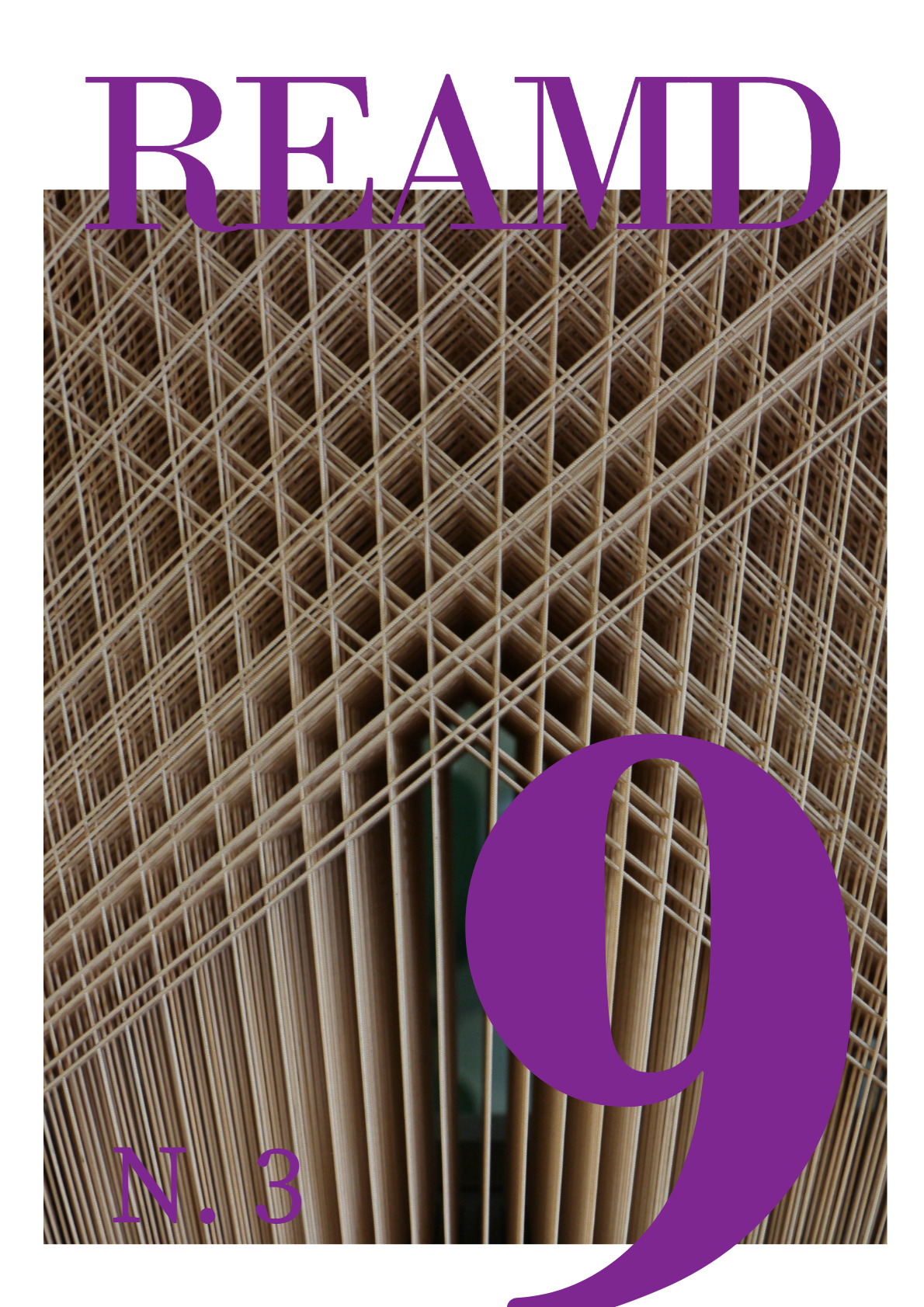Graphic memory and design training: local culture in design practice in basic disciplines
DOI:
https://doi.org/10.5965/25944630932025e7253%20Keywords:
graphic memory, teaching methodologies, designAbstract
To overcome the functionalist and Eurocentric approach to Graphic Design teaching, undergraduate Design courses at the Federal University of Sergipe began including content on local printed matter. The focus, described in this text, was to provide History of Design students with practical experience through the study of graphic memory, emphasizing local sociocultural and political contexts in teaching. To inform this account of the classroom experience, the following were conducted: a theoretical review of the concept of graphic memory combined with a conception of Design teaching in Brazil; and an analysis of teaching experiences that emphasize local visual and cultural repertoires as a basis for practical projects, based on the results of local studies conducted by the Design, Culture, and Society Research Group (CNPq/UFS). The development of pedagogical strategies that connect local graphic memory and design practice through activities that primarily used 20th-century Sergipe printed matter is highlighted. As a result, it was understood that the active and critical integration of graphic memory into Design disciplines in Sergipe contributes to the development of professionals who are attentive to local cultural diversity. The aim is to contribute to the strengthening of teaching methodologies that not only value technique but also recognize graphic memory as an essential training tool, enabling the development of a critical and multifaceted perspective on local cultural artifacts, popular writing, historical archives, and peripheral aesthetics as sources of learning and resistance in the teaching of Design history in Brazil.
Downloads
References
ANDRADE, Débora; IBARRA, María Cristina. Aproximações em Design para além do Racionalismo: tecendo caminhos para o pluriverso. Estudos em Design, Rio de Janeiro, v. 29, n. 1, p. 155-169, 2021.
ARAUJO, Germana Gonçalves de. A formação em Design à margem do centro e a possível ruptura do alfabeto regular. Albuquerque: Revista de História, [S. l.], v. 14, n. 27, p. 119-136, jan./jun. 2022. Disponível em: https://dialnet.unirioja.es/descarga/articulo/8538266.pdf. Acesso em: 16 ago. 2025.
BATISTA, Sâmia; CARVALHO, Ricardo Artur Pereira. Design e decolonialidade: fundamentos, debates e rupturas. Arcos Design, Rio de Janeiro, v. 13, n. 2, p. 6-25, 2022. Disponível em: https://www.e-publicacoes.uerj.br/arcosdesign/article/view/69742. Acesso em: 29 abr. 2025.
BOSI, Alfredo. Cultura brasileira e culturas brasileiras. In: BOSI, Alfredo. Dialética da colonização. São Paulo: Companhia das Letras, 1992. p. 308-345.
ESCOBAR, Arturo. Autonomía y diseño: la realización de lo comunal. Popayán: Universidad del Cauca, 2016.
ESCOBAR, Arturo. Sentipensar con la tierra: nuevas lecturas sobre desarrollo, territorio y diferencia. Medellín: Ediciones Unaula, 2018.
FARIAS, Priscila; BRAGA, Marcos da Costa (org.). Dez ensaios sobre memória gráfica. São Paulo: Blucher, 2018.
GRUPO DE PESQUISA, DESIGN, CULTURA E SOCIEDADE. Memória Gráfica de Sergipe. São Cristóvão: UFS, 2020. Relatório de pesquisa.
LEON, Ethel. Canasvieiras, um laboratório para o Design Brasileiro: a história do LDP/DI e LBDI – 1983-1997. Florianópolis: UDESC/FAPESC, 2014a.
LEON, Ethel. IAC: Primeira Escola de Design do Brasil. São Paulo: Blucher, 2014b.
LIMA, Edna Cunha; MARTINS, Bianca. Design Social, o herói de mil faces, como condição para a atuação contemporânea. In: BRAGA, Marcos (org.). O papel do design gráfico: história, conceito & atuação profissional. São Paulo: Editora Senac São Paulo, 2011.
MELLO, Chico Homem de. Linha do tempo do design gráfico. São Paulo: Cosac & Naify, 2012.
MELLO, Chico Homem de. O design gráfico brasileiro: anos 60. São Paulo: Cosac & Naify, 2006.
MIGNOLO, Walter D. Colonialidade: o lado mais escuro da modernidade. Tradução de Marco Oliveira. Revista Brasileira de Ciências Sociais, [S. l.], v. 32, n. 94, 2017. Disponível em: https://www.scielo.br/j/rbcsoc/a/nKwQNPrx5Zr3yrMjh7tCZVk/abstract/?lang=pt. Acesso em: 1 jan. 2025.
OKABAYASHI, Júlio C. Tamer. Uma perspectiva decolonial para o design no Brasil: design, eurocentrismo e desenvolvimento. São Paulo: Sabiá, 2021.
PUJOL ROMERO, Mônica. Design: apontamentos para definir o campo. In: BELLUZO, Gisela; LEDESMA, Maria (org.). Novas fronteiras do design gráfico. São Paulo: Estação das Letras e Cores, 2011.
SANTOS, Marinês Ribeiro dos. Design e cultura: os artefatos como mediadores de valores e práticas sociais. In: QUELUZ, Marilda L. P. (org). Design & Cultura. Curitiba: Editora Sol, 2005.
SANTOS, Boaventura de Sousa. Renovar a teoria crítica e reinventar a emancipação social. São Paulo: Boitempo, 2007.
UNIVERSIDADE FEDERAL DE PERNAMBUCO. Centro Acadêmico do Agreste. Projeto Pedagógico de Curso de Design. Disponível em: https://www.ufpe.br/documents/2248102/0/PPC+Design+%28CAA%29.pdf/d58f8c3c-ca3f-4d90-a460-24461fb818b8. Acesso em: 8 ago. 2025.
UNIVERSIDADE FEDERAL DE SERGIPE. SIDI-Graduação. Relatório de Matriculados no Curso de Artes Visuais. Atualizado em 30 jul. 2025a. Disponível em: https://app.powerbi.com/view?r=eyJrIjoiODBjOWU5MjYtOTRlNy00OWNkLWI3YWUtZWNlMGQzZjQyYjYxIiwidCI6IjhlNTRmODJjLTBmOWQtNGE2Ny1iNTZlLTk5M2I3Y2ExOWVmMiJ9. Acesso em: 8 ago. 2025.
UNIVERSIDADE FEDERAL DE SERGIPE. Design Gráfico/DAVD: Projeto Político Pedagógico. Sistema Integrado de Gestão de Atividades Acadêmicas. São Cristóvão: UFS, 2025b. Disponível em: https://www.sigaa.ufs.br/sigaa/public/curso/ppp.jsf?lc=pt_BR&id=320157. Acesso em: 1 jan. 2025.
Downloads
Published
How to Cite
Issue
Section
License
Copyright (c) 2025 Germana Araujo, Vicent Bernardo Alves Santos

This work is licensed under a Creative Commons Attribution 4.0 International License.
- Authors retain copyright and grant the journal the right of first publication, with work simultaneously licensed under the Creative Commons Attribution 4.0 International License, which allows for:
1. Share — copy and redistribute the material in any medium or format for any purpose, even commercially.
2. Adapt — remix, transform, and build upon the material for any purpose, even commercially.
The licensor cannot revoke these freedoms as long as you follow the license terms.Under the following terms:
1. Attribution — You must give appropriate credit, provide a link to the license, and indicate if changes were made. You may do so in any reasonable manner, but not in any way that suggests the licensor endorses you or your use.
2. No additional restrictions — You may not apply legal terms or technological measures that legally restrict others from doing anything the license permits. -
Plagiarism, in all its forms, constitutes unethical publication behavior and is unacceptable. This magazine uses iThenticate similarity control software.






